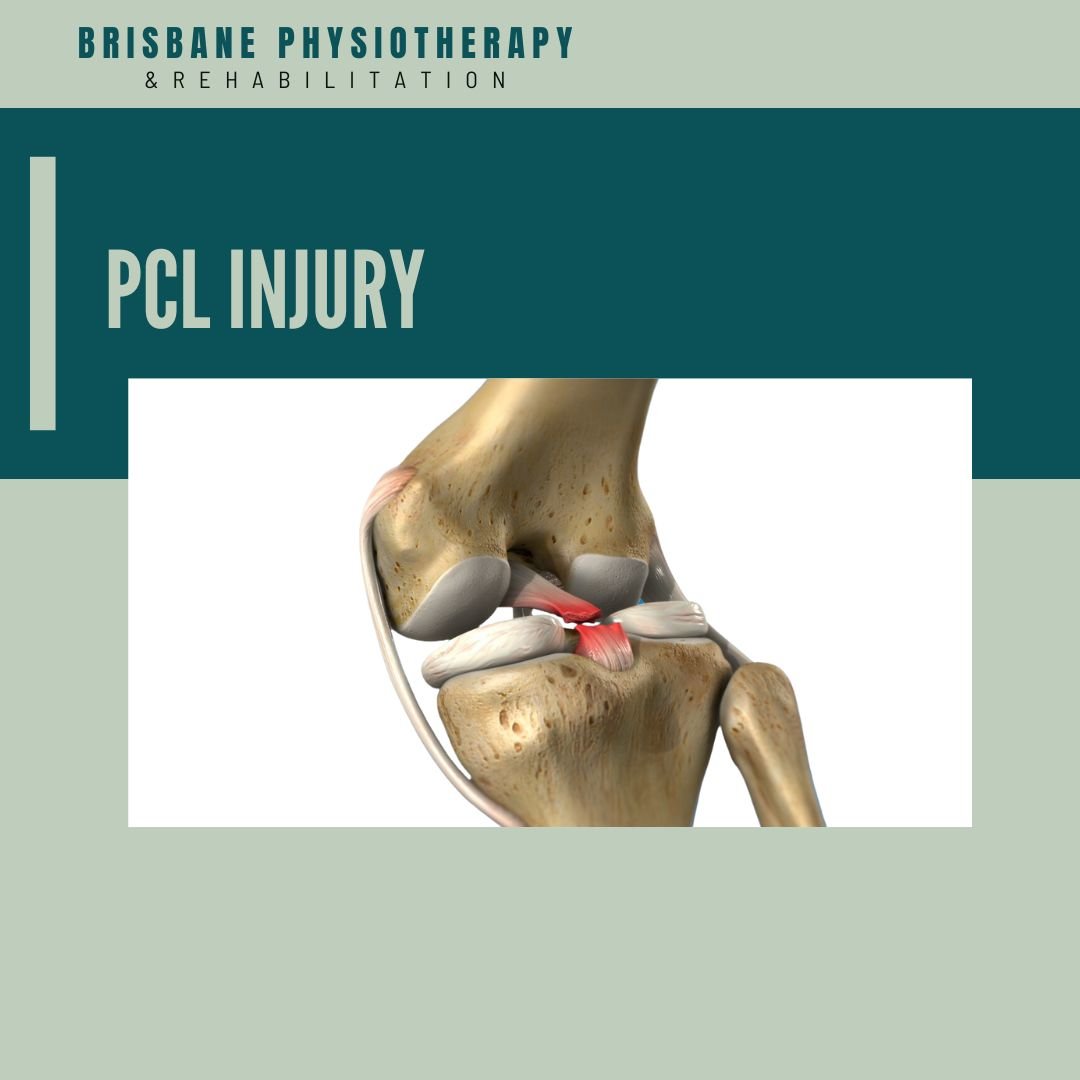What is a PCL Injury?
A PCL (Posterior Cruciate Ligament) injury occurs when there is damage to the ligament located in the back of the knee joint. The PCL is one of the primary ligaments responsible for stabilising the knee, particularly preventing the shinbone (tibia) from moving too far backward relative to the thighbone (femur). PCL injuries often result from trauma or direct impact to the front of the knee, such as during a car accident, sports-related collision, or a fall onto a bent knee.
Symptoms of a PCL injury may include:
Pain and tenderness in the back of the knee, particularly with weight-bearing activities.
Swelling and stiffness in the knee joint.
Instability or a feeling of "giving way" in the knee, especially when walking or changing direction.
Difficulty fully bending or straightening the knee.
Treatment for a PCL injury depends on the severity of the injury and the patient's individual circumstances. In general, PCL injuries are classified into three grades:
Grade I: Mild sprain with minimal stretching or tearing of the ligament.
Grade II: Moderate sprain with partial tearing of the ligament.
Grade III: Severe sprain with complete tearing of the ligament.
For Grade I, II and most Grade III PCL injuries, conservative treatments may be sufficient and can include:
Physiotherapy: Specific exercises to strengthen the muscles around the knee joint, with specific focus on quadriceps strength, improve range of motion, and enhance stability.
RICE acutely:
Rest: Avoiding activities that exacerbate pain or instability in the knee.
Ice therapy: Applying ice packs to the affected knee for 15-20 minutes several times a day to reduce swelling and pain.
Compression: Using an elastic bandage or compression sleeve to help control swelling and provide support to the knee joint.
Elevation: Keeping the affected knee elevated above the level of the heart to reduce swelling.
Immobilisation: More severe (Grade III) injuries should be immobilised and braced in extension for the first 2 weeks following injury
The PCL has been reported to have an intrinsic healing ability following acute injury, however, the position and strength of ligament healing is variable, therefore knee injuries with multi-ligament injury or chronic PCL injury are found to be best treated surgically. Of patients who experienced ongoing laxity with ligament healing report good functional outcomes regardless of laxity, following a comprehensive rehabilitation program.
PCL Rehabilitation
Rehabilitation for a PCL (Posterior Cruciate Ligament) injury aims to restore knee stability, function, and range of motion while minimising pain and swelling. The PCL is one of the main ligaments in the knee that provides stability and prevents the tibia (shinbone) from moving too far backward relative to the femur (thighbone). Here's a general overview of the stages and components of PCL injury rehabilitation:
Acute Phase (0-72 hours):
Rest: Avoid activities that exacerbate pain and swelling.
Ice: Apply ice packs to the injured knee for 15-20 minutes every few hours to reduce pain and swelling.
Compression: Use an elastic bandage or compression sleeve to help control swelling.
Elevation: Elevate the injured leg above the level of the heart to reduce swelling.
Early Rehabilitation (1-6 weeks):
Range of Motion (ROM) exercises: Perform gentle exercises to regain full knee range of motion, focusing on flexion and extension.
Strengthening exercises: Start with isometric exercises for the quadriceps, hamstrings, and calf muscles to maintain muscle tone without stressing the injured ligament.
Proprioception exercises: Improve balance and joint position sense through activities like standing on one leg or using a balance board.
Partial weight-bearing: Begin partial weight-bearing exercises as tolerated, progressing from non-weight-bearing to full weight-bearing over time.
Intermediate Rehabilitation (6-12 weeks):
Progressive strengthening: Incorporate resistance exercises to strengthen the muscles around the knee, including the quadriceps, hamstrings, and calf muscles.
Functional exercises: Integrate activities that mimic daily tasks or sports-specific movements to improve overall function and stability.
Neuromuscular control training: Focus on exercises that enhance dynamic stability, coordination, and control of movement.
Cardiovascular conditioning: Incorporate low-impact cardiovascular exercises such as cycling or swimming to maintain cardiovascular fitness while minimizing stress on the knee.
Advanced Rehabilitation (12+ weeks):
Sport-specific training: Gradually reintroduce activities and movements specific to the individual's sport or activity, with a focus on proper technique and biomechanics.
Plyometric exercises: Incorporate jump training and other explosive movements to improve power, agility, and neuromuscular control.
Functional testing: Perform functional assessments to evaluate readiness to return to sport or other high-level activities.
Throughout the rehabilitation process, it's essential to progress gradually, listen to your body, and avoid activities that cause pain or discomfort. Working closely with a physical therapist or sports medicine professional can provide personalized guidance and supervision to optimize recovery and reduce the risk of reinjury. Additionally, maintaining consistency with home exercises and adhering to any specific recommendations from your healthcare provider are critical for successful rehabilitation outcomes.
